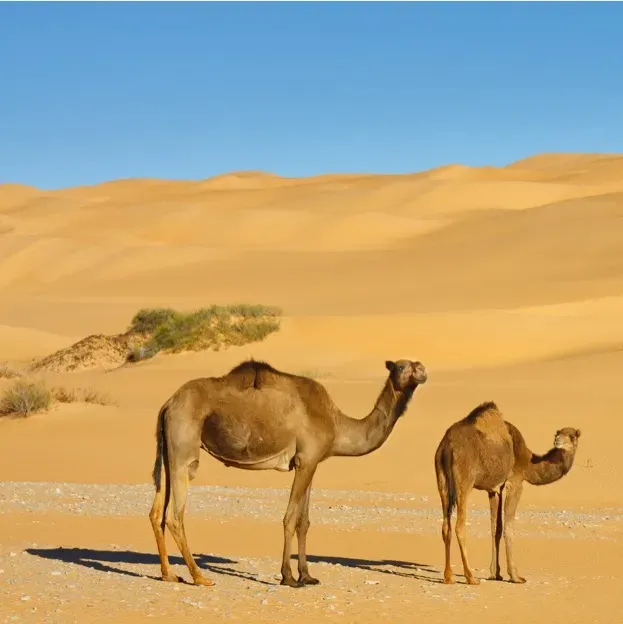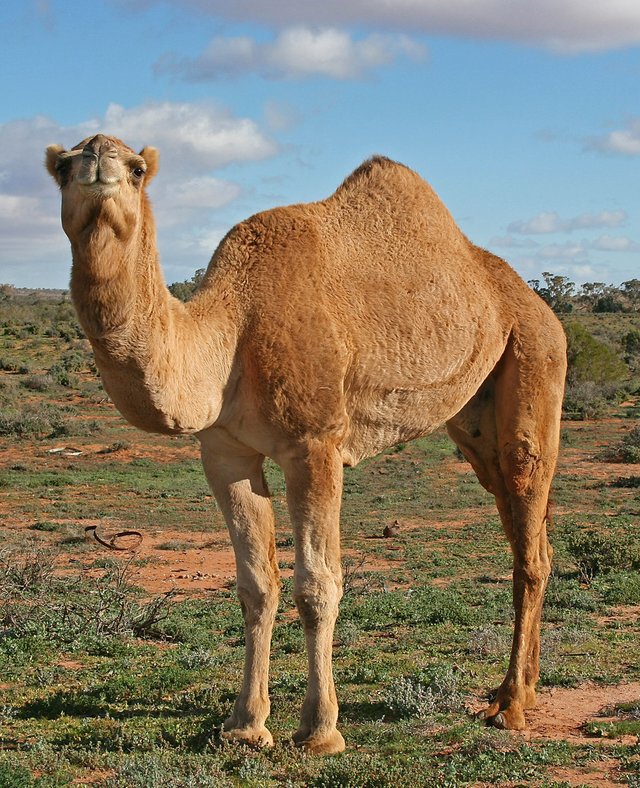Types of camels


Types of Camels
Dromedary (Arabian) Camel:
- Hump: One hump.
- Habitat: Predominantly found in the Middle East and North Africa.
- Adaptations: Well-suited for hot climates, these camels can go without water for long periods, as their humps store fat, which can be converted to water and energy when food is scarce.
Bactrian Camel:
- Humps: Two humps.
- Habitat: Native to Central Asia, particularly in Mongolia and China.
- Adaptations: Better adapted to cold, rocky environments, with a thick coat that helps them survive extreme temperatures.
Physical Characteristics
- Humps: Contrary to popular belief, the humps do not store water but rather fat, which serves as an energy reserve.
- Body Structure: Long legs keep their bodies away from the hot ground, and their large, padded feet help them walk on sand without sinking.
- Nasal Passages: They have slit-like nostrils and long eyelashes to protect against sand and dust.
- Diet: Herbivorous, camels eat dry grasses, grains, and sometimes thorny plants. They can consume large amounts of water quickly and go for days without it.
Behavior and Social Structure
- Social Animals: Camels are often found in herds led by a dominant male. They communicate through sounds like grunts and moans and show affection by nuzzling each other.
- Domestication: Camels have been domesticated for thousands of years, primarily for transportation, milk, meat, and wool. They play a crucial role in the economy and culture of many desert-dwelling communities.
Adaptations to Environment
- Water Conservation: Camels can drink up to 40 gallons of water in one go. Their bodies are adapted to minimize water loss through urination and sweating.
- Temperature Regulation: They can withstand extreme temperature variations, ranging from freezing nights to scorching daytime heat.
- Efficient Breathing: Their specialized nasal passages allow them to conserve moisture while breathing.
Cultural and Economic Significance
- Transport: Often referred to as the "ships of the desert," camels have historically been used for transporting goods and people across arid regions.
- Agriculture and Livestock: Camel milk is a staple for many nomadic cultures, rich in nutrients and vitamins. Camel meat is also consumed, and their hair is used for textiles.
- Cultural Symbol: Camels hold significant cultural importance in many desert societies, symbolizing endurance and resilience.
Conservation and Challenges
- Wild Bactrian Camels: Listed as critically endangered, wild Bactrian camels face threats from habitat loss, hunting, and competition with livestock.
- Dromedaries: Although domesticated dromedaries are not endangered, they face challenges like climate change and modern transportation reducing their traditional roles.
Interesting Facts
- Camels have been used in warfare and exploration, including in ancient armies and during the exploration of the American West.
- A camel's milk is highly nutritious, with less fat than cow's milk and more vitamin C.
- They have a lifespan of about 40 to 50 years.
In summary, camels are remarkable creatures with extraordinary adaptations that allow them to thrive in some of the world's harshest environments. They have played an essential role in the survival and culture of many human societies throughout history.
Congratulations, your post has been upvoted by @upex with a 0.47% upvote. We invite you to continue producing quality content and join our Discord community here. Visit https://botsteem.com to utilize usefull and productive automations #bottosteem #upex